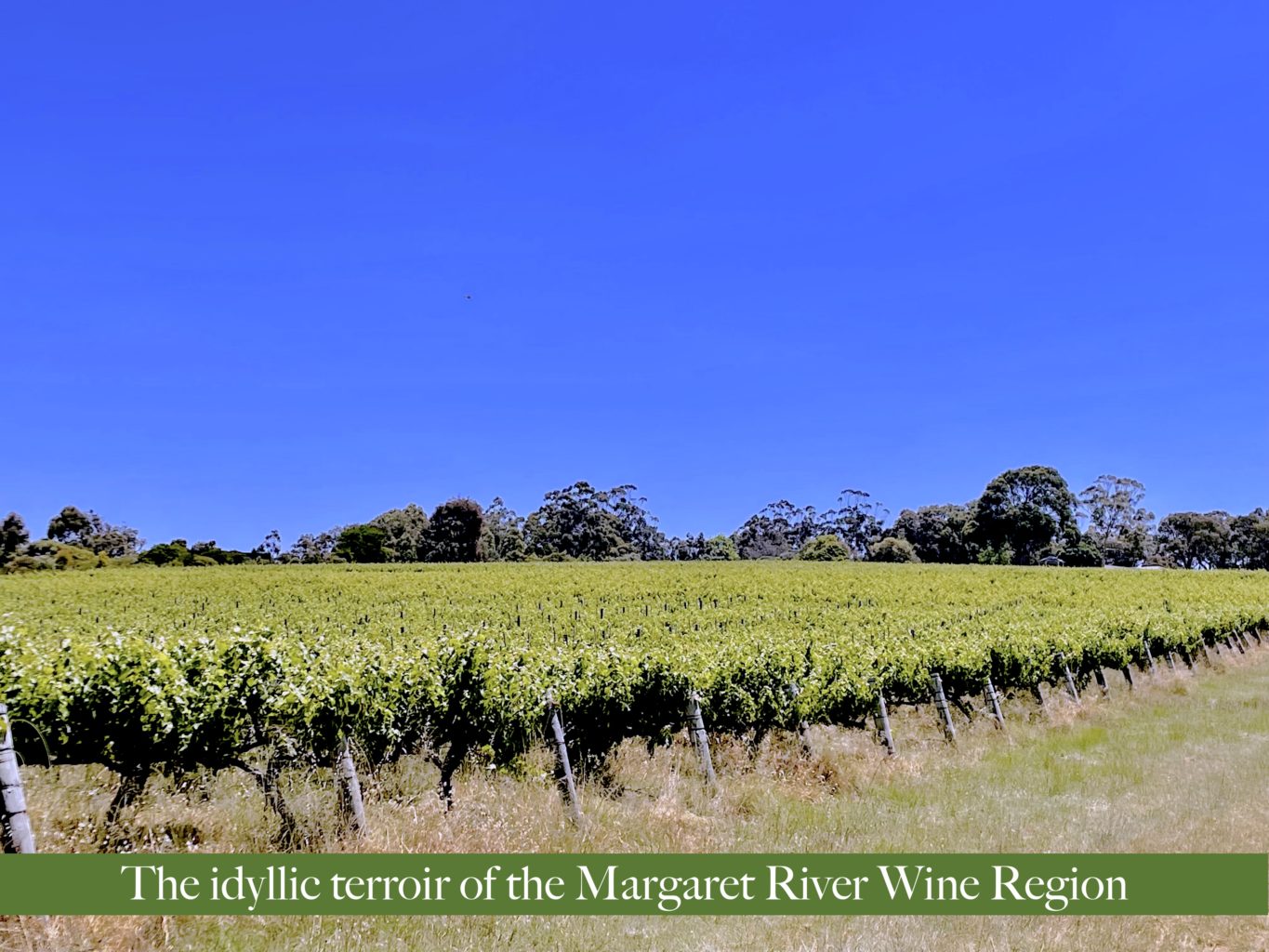
Terroir (pronounced Tare-Warh), and it’s influence on the flavour of wine is an easily misunderstood and somewhat mysterious word that refers to the uniquely identifiable tastes of a place. For example, wines made in the Margaret River wine region, particularly those made from a single variety, without blending, may display identifiable characteristics of the exact location where they are produced. Terroir and its influence, can be difficult to pinpoint because it not only encompasses unique soil and climatic conditions but also the timing of harvest, the levels of nutrients and the vineyard’s irrigation or water supply (Van Leeuwen & Seguin, 2006).
Margaret River is described as having a maritime climate due to the strong influence of its proximity to the ocean in three directions and this means that viticulturalists must work within the parameters of those conditions, including selecting varieties that are suited to those conditions (Dukes, 2020). In addition, soil types play an important role alongside climate and micro-climates formed by topographical diversity within a vineyard’s landscape (Winemaker’s Academy, 2014). Certain varieties including pinot noir for example are particularly sensitive to slight variations in soil and may grow well in one place but not so well just a few hundred metres away where the soil varies due to topographical variations such as slope or aspect (Goode, 2021).
The concept of terroir is quite sophisticated as its influence over the taste of a wine is difficult to detect. Experienced tasters, particularly winemakers who are intimate with their plots and who carefully separate the grapes from particular blocks may, however, be able to identify the difference between two wines derived from the same variety and treated with the same winemaking processes but grown in distinctive micro-climates (Winemaker’s Academy, 2014)
In the Margaret River Wine Region, geological maps show a fault line known as the Dunsborough Fault which runs from Dunsborough to Augusta. Land to the west (ocean side) of this fault line is where Forest Grove soils dominate and are home to more than 40% of the region’s vines. The Margaret River wine region, however extends on both sides of the fault line into areas where a variety of soil types and topography can be found, creating a diverse range of microclimates suited to support a range of varietals (Tille et al, 2020).
High quality red wine production often requires moderate water deficit stress or low nitrogen levels, conditions provided by shallow or stony soils and moderately dry climates. Both of these conditions are abundantly provided for by the region’s topography. Forest Grove soils are generally made up of around 50-80cm of sandy lateritic colluvium, typically with an ironstone-derived duricrust sitting over the top of mottled yellow clay. This topsoil is typically a yellowish-brown loamy sand which may consist of up to 60% rounded ironstone gravels. (Tille et al, 2020).
However, distinguishable terroir emerges from more than environmental factors and also requires a winemaking culture wherein quality-orientated wine production is financially viable (Van Leeuwen & Seguin, 2006). Again, Margaret River, being blessed with long term, passionate vineyard owners, has this terroir advantage, being invested in since its inception by people who have demonstrated deep and lasting passions for quality wine production. Many of the award-winning and proclaimed wines that are produced in Margaret River can be described as terroir wines because their origins are traceable and they are produced from specified locations over consecutive years (Van Leeuwen & Seguin, 2006).
The team at Margaret River Tours is very proud to have the honour of sharing and showcasing the wines of the Margaret River wine region. We invite you to join us on a discovery of all the region has to offer by booking one of our fabulous wine tours of Margaret River. We feel so fortunate that when we visit many of our favourite cellar doors that we can learn exactly where, when and how the wine we are tasting was made and even on occasions to meet the winemakers and vignerons who produced them. Taste the terroir and appreciate the soil and toil of Margaret River wines.
References
Dukes, B. (2020). Margaret River Wine. https://margaretriver.wine/the-climate-and-soils-of-margaret-river/
Goode, J. (2021). The Science of Wine: From Vine to Glass–3rd Edition. University of California Press.
Tille, P, Stuart-Street, A & Gardiner, P. (2020). Geology, soils and climate of the Margaret River wine region. Department of Primary Industries and Regional Development, Perth.
Van Leeuwen, C & Seguin, G. (2006). The concept of terroir in viticulture. Journal of Wine Research, 17:1, 1-10, DOI: 10.1080/09571260600633135
Winemaker’s Academy (2014). https://winemakersacademy.com/terroir-affects-wine-making/